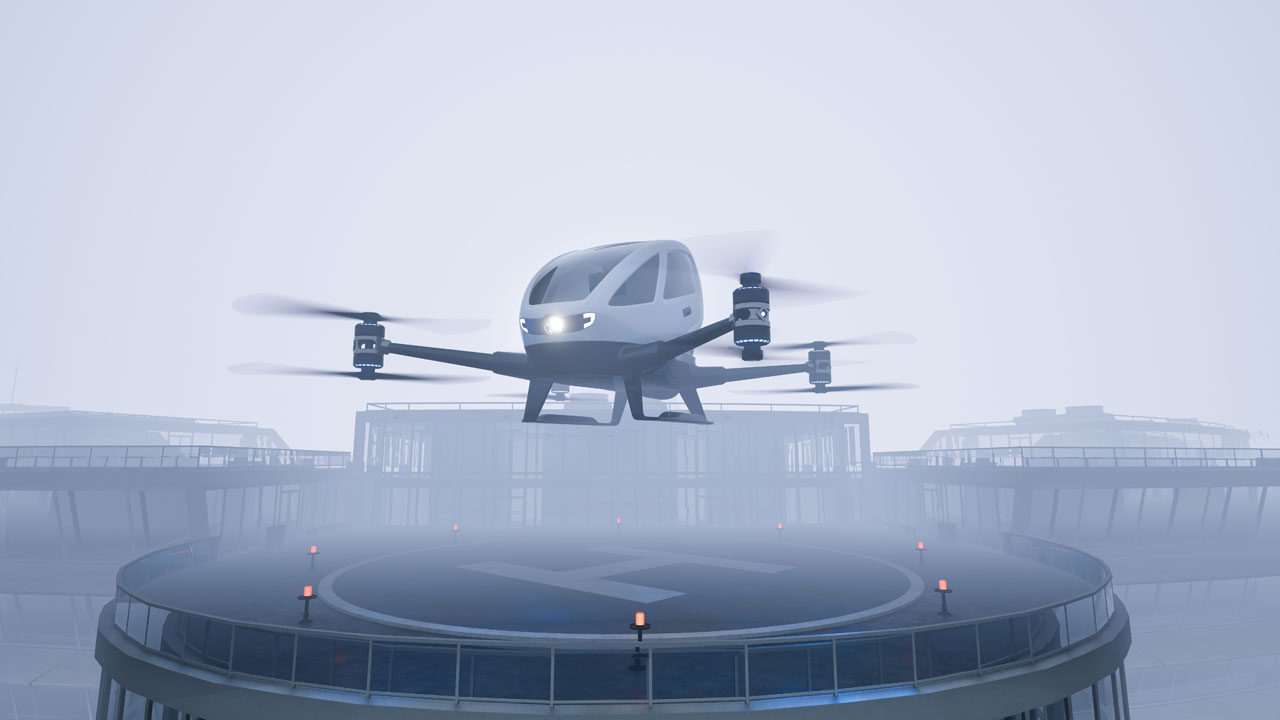3 min read
Aerospace Trends: An Innovative Industry Continues to Evolve
![]() Dave Biering
December 4, 2023
Dave Biering
December 4, 2023

In just 120 years, the aerospace industry has gone from a single bicycle shop to a massive global industry that helps humanity reach for the stars. Even after a century of rapid innovation, the aerospace industry continues to evolve to this day. In this blog, we take a look at some of the most important trends shaping the future of the aerospace industry.
Trend One: A Supersonic Renaissance?
Many readers may remember the Concorde, an iconic supersonic passenger aircraft that was capable of making a flight from New York City to London in an average of just three hours and thirty minutes. The Concorde made its last flight in 2003, however, and no supersonic alternatives emerged to take its place. While the Concorde successfully transported more than 2.5 million passengers across the Atlantic, a single one-way ticket cost $6,000 and the aircraft still never managed to recoup its development costs.
Today, a number of startups are competing to build a more practical supersonic successor to the Concorde. While military aircraft routinely travel faster than sound, engineering a passenger aircraft to do so reliably, safely, and cost-effectively is a serious engineering challenge.
Trend Two: The Growth of 3D Printed Components
3D-printed components are making amazing strides in a number of different industries, and aerospace is no exception. With fewer limitations on part geometry compared to traditional manufacturing techniques, 3D-printed aircraft parts unlock entirely new design possibilities. In this article, Simple Flying looks at how an innovative General Electric turbofan engine leveraged 3D printing to reduce 300 different engine parts to just seven.
Trend Three: The Growth of the Space Segment
A key emerging market for aerospace companies, space applications have recently seen explosive growth and a dramatic shift from public to private sector operation. Startups like SpaceX, Blue Origin, and Virgin Galactic have generated headlines for their private space exploration milestones, all while exploring innovative technological approaches such as reusable launch vehicles (traditional rocket launch systems were destroyed with each launch) which have the potential to dramatically transform the economics of spaceflight.
According to Forbes, “the U.S. now has 5,582 space-focused companies, almost ten times more than the next country, the UK, which has 615…The 10,000+ companies in space technology have a combined value of over $4 trillion, according to the report. Launch technology continues to improve, bringing orbital delivery costs down to an estimated $500/kilogram in SpaceX’s Starship, as opposed to $20,000/kilogram on NASA’s iconic Space Shuttle.”
Trend Four: Advanced Air Mobility
Advanced air mobility (AAM) refers to an air transport system concept that, according to BAE systems, “integrates new, transformational aircraft designs and flight technologies into existing and modified airspace operations.” Not a replacement for the current air transport system, AAM technologies are rather envisioned as “last leg” solutions that could extend air transport systems to areas currently underserved, such as inside urban areas (where conventional aircraft are too noisy) or in remote rural areas (which may lack the infrastructure needed for fueling and maintaining traditional aircraft).
Potential AAM solutions range from small quadcopters (potentially valuable, for example, for delivering urgent medicine to remote rural locations), to full-fledged “air taxi” concepts.
While commercial-ready fixed-wing AAM craft appear to still be further off, electric eVTOL (vertical takeoff and landing) and sUAS (small unmanned aircraft systems) craft are already making immense strides. Identifying AAM craft as a key emerging market for aerospace companies, Deloitte’s 2023 aerospace industry report notes that regulatory schemes are currently being adapted to accommodate these new aircraft designs, concluding that ”growing investments and a fast-moving certification process for eVTOL aircraft globally will likely shift AAM companies’ focus on pilot training to achieve commercial operations by 2025.”
Trend Five: A Push Toward Decarbonization
Like many other industries, aerospace companies are under intense pressure to reduce carbon emissions wherever possible. Doing so for aircraft is a challenge even greater than that faced by the automotive industry—virtually all modern commercial aircraft require far more power than can be provided using existing electric technology. But a number of innovative companies are moving quickly to fill this gap.
Potential approaches to reducing aerospace emissions include:
- Sustainable aviation fuels: sustainable fuels, such as fuels made from biomass, waste gases, or even algae, have the potential to dramatically reduce the emissions of aircraft using existing propulsion technologies. Critically, this technology is potentially capable of scaling without the need to realize advanced new aircraft propulsion approaches. The International Air Transport Association (IATA) projects SAF production to reach about 65% of total fuel requirements by 2050.
- Advanced air mobility solutions, outlined above, may play a key role in reducing emissions for regional air transport. Recent research by Deloitte suggests that AAM can reduce travel time by 75% with zero operating emissions for a 25-mile intracity trip.
- New air propulsion technologies, such as hybrid, hydrogen, and electric, are currently under intensive development. While likely not viable for long-distance in the foreseeable future, electric aircraft, for instance, could be potentially valuable for shorter-range flights, conserving SAF fuels for longer-range routes. While still a long way from widespread commercial use, some designs are already being actively tested. For example, the Air Force recently conducted trials with a commercial electric aircraft of design, the BETA ALIA, which boasts a range of 250 miles, a top speed of 138 mph, and 90% quieter operation a helicopter.
Learn More: Advanced Materials and Aerospace Innovation
The aerospace industry’s continued evolution has always supported and benefitted from the development of innovative new materials. For a deeper look at the historical relationship between materials and aerospace engineering please see our blog here.
At TriStar, our engineering team has extensive experience working with aerospace industry clients to find the right materials for challenging applications. For a deeper dive into the biggest challenges for aerospace industry components (and how TriStar’s high-performance polymers can help solve them) please see our guide here.








